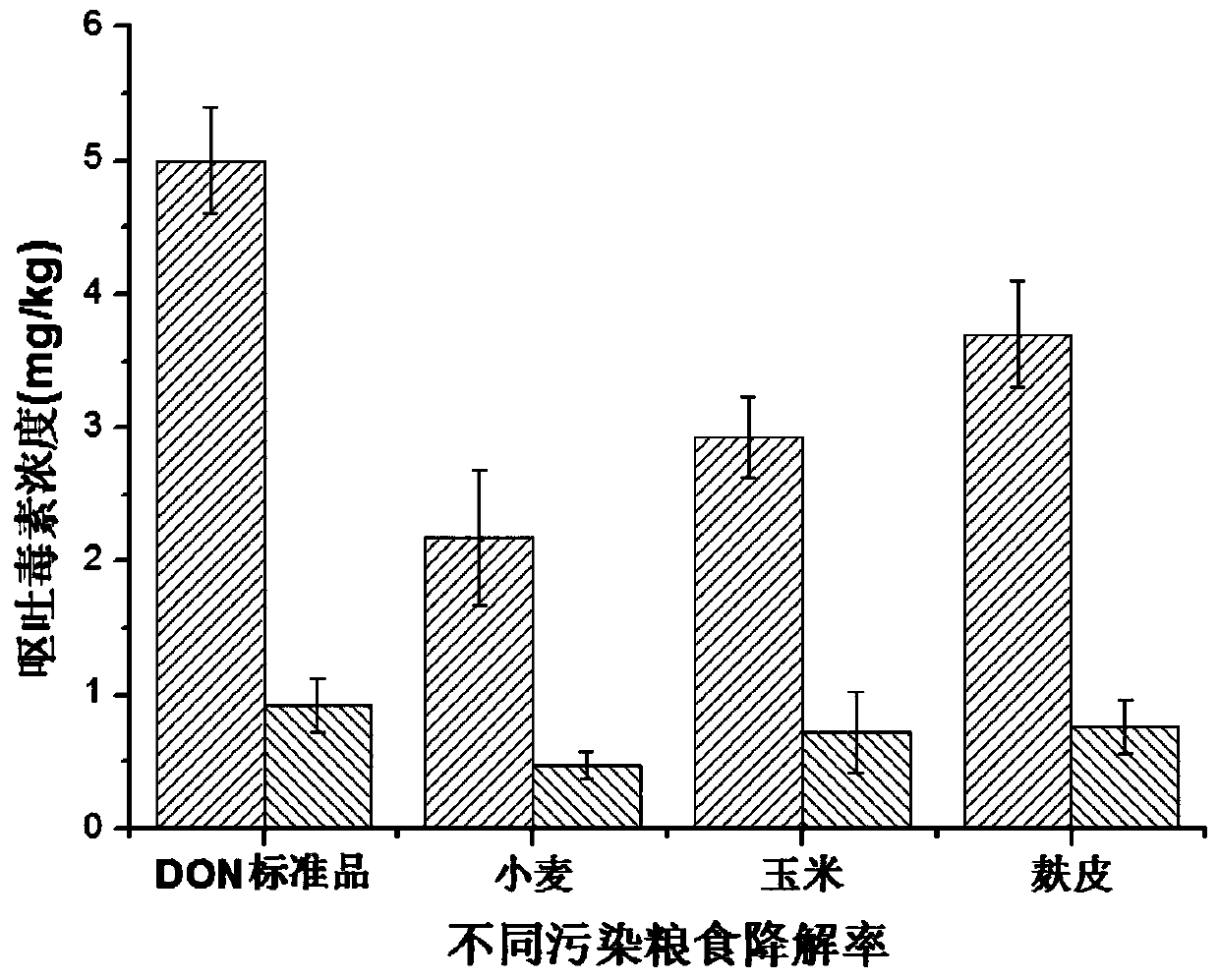A method for rapidly and effectively degrading deoxynivalenol in grains
A rapid degradation and grain technology, applied in the field of food safety, can solve the problems of damage to the nutrients of raw materials, inability to promote efficient promotion, environmental pollution, etc., and achieve the effects of short processing time, low preparation cost and strong controllability
- Summary
- Abstract
- Description
- Claims
- Application Information
AI Technical Summary
Problems solved by technology
Method used
Image
Examples
Embodiment 1
[0026] Example 1: Degradation of toxins in food by ozone water
[0027] Pour the contaminated grain material into the container, mix the grain material with water at a ratio of 1:5, the pH of the material liquid is 8.2-8.5, and let it stand in the container for 10 minutes to soak. For example, take 100g of corn and add 500ml of water to control the pH of the feed solution to 8.2-8.5.
[0028] (1) Formation of ozone water system
[0029] In an open and ventilated environment, turn on the ozone generator, pre-discharge the leather tube connected to the gas outlet of the generator for 1 to 2 minutes under the exhaust system device, and then pass the ozone into the soaked material liquid of Example 1, Maintain the ozone concentration in the aqueous solution at 50mg / L. Ozone is unstable in water, and the reduction reaction occurs all the time, producing very active and strong oxidizing monatomic oxygen (O), which decomposes bacteria, microbial organic substances and toxins in wat...
Embodiment 2
[0035] Embodiment 2: Absorption treatment of ozone waste gas
[0036] Ozone gas is a harmful gas with a concentration of 6.25×10 -6 mol / L (0.3mg / L) will irritate and damage mucous membrane tissues such as eyes and respiratory system, have negative effects on human health, and cause damage to the environment. If the residual ozone gas in the degradation reaction is not treated, it will overflow into the air. The design is to discharge the residual ozone gas from the experiment through the catheter through the sodium thiosulfate solution. The sodium thiosulfate solution can absorb the ozone gas instead of Will pollute the environment. A small amount of ozone remaining in the grain will be decomposed into oxygen, which will not cause harm to the environment, and is an environmentally friendly and non-hazardous degradation method. The process is: 3Na 2 S 2 o 3 +4O 3 +3H 2 O=6NaHSO 4 .
PUM
 Login to View More
Login to View More Abstract
Description
Claims
Application Information
 Login to View More
Login to View More - R&D
- Intellectual Property
- Life Sciences
- Materials
- Tech Scout
- Unparalleled Data Quality
- Higher Quality Content
- 60% Fewer Hallucinations
Browse by: Latest US Patents, China's latest patents, Technical Efficacy Thesaurus, Application Domain, Technology Topic, Popular Technical Reports.
© 2025 PatSnap. All rights reserved.Legal|Privacy policy|Modern Slavery Act Transparency Statement|Sitemap|About US| Contact US: help@patsnap.com

